This article was co-authored by Laura Marusinec, MD. Dr. Marusinec is a board certified Pediatrician at the Children's Hospital of Wisconsin, where she is on the Clinical Practice Council. She received her M.D. from the Medical College of Wisconsin School of Medicine in 1995 and completed her residency at the Medical College of Wisconsin in Pediatrics in 1998. She is a member of the American Medical Writers Association and the Society for Pediatric Urgent Care.
This article has been viewed 239,163 times.
Every person has wax, which is also called cerumen, in their ears. However, you may be experiencing a sense of fullness, discharge from your ear, or have difficulty hearing on occasion.[1] These can be symptoms of a wax plug, or cerumen impaction.[2] By determining if you have a wax plug and treating it at home or under the care of a doctor, you can successfully remove your cerumen impaction.
Things You Should Know
- Try ear wax removal drops or DIY drops made from baby oil or glycerin to get rid of ear wax plugs by yourself at home.
- Use an over-the-counter ear suction device to remove excess wax from your ears.
- If you experience pain, any signs of an infection, or can't remove the ear wax on your own, see a medical professional.
Steps
Home Remedies
-
1Be aware of the risk factors for ear wax buildup. Some people may never have trouble with ear wax, while others are more prone to buildup. Being aware if you are at risk can help you figure out if you have a wax plug.
- People who use hearing aids or ear plugs are more likely to have impacted wax.[3]
- Those who use cotton swabs or put other items in their ears are more likely to experience wax plugs.[4]
- Older people and those with developmental disabilities are more likely to have wax buildup.[5]
- Some people have ear canals that are shaped in such a way that it is difficult for the body to naturally remove wax.[6]
-
2Determine if you have a wax plug. The best way to determine if you have a wax plug is to see a doctor, but you may want to try home treatments first. Before you begin any type of home treatment for a wax plug, it’s important to determine that you have one. This can help ensure that you don’t use a treatment that could cause harm or that you don’t have another condition such as an ear infection.
- You can purchase a special light (an otoscope) to look into the ear that is made for people who are not doctors for $10-$30 online or at some drug stores. A family member or friend can help you determine if you may have ear wax by using this tool.[7]
Advertisement -
3Recognize the symptoms of impacted wax. It can be relatively easy to determine if you have impact wax by recognizing the symptoms. From feelings of fullness to discharge, there are several signs that you may have a wax plug that requires removal.[8]
- A feeling of fullness or sensation that the ear is plugged may accompany impacted cerumen.[9] You may also feel like your ears are itchy.[10]
- Noises in the ear, called tinnitus, may be present with a wax plug.[11]
- You may experience partial hearing loss that gets worse with impacted wax.[12]
- You may have an earache or mild pain with cerumen plugs.[13]
- You may notice mild discharge that looks like wax from your ears with impacted cerumen.[14]
- You might notice a mild odor emanating from your ear.[15]
- If you have severe ear pain, a fever, or drainage that looks or smells like pus, you should see a doctor to make sure you don't have an ear infection.
-
4Wipe the outside of your ear. You can clean the outside of your ear canal with a cloth or paper tissue. This may help remove discharge or any wax that has worked its way outside of your inner ear.[16]
-
5Apply over the counter ear drops to remove wax. For those people with minimal to moderate amounts of ear wax, use an over the counter wax removal preparation. This can help clear any impacted wax.[20]
- Most over the counter drops are oil and peroxide solutions.
- The hydrogen peroxide will not dissolve your wax, but help it move through the ear canal.
- Make sure to follow the package instructions for using the products to help ensure you don’t cause further problems.
- If you have an eardrum perforation or suspect that you may, do not use an over the counter preparation.
- You can purchase over the counter ear wax removal drops at most pharmacies and some large retailers.
-
6Try oil or glycerin drops to soften wax. In addition to over the counter wax treatments, you can also use simple household oils or glycerin drops to relieve wax plugs. These treatments soften ear wax, making it easier to clear out of your ear canal.
- You can use baby or mineral oils as a treatment.[21] Place a few drops of baby or mineral oil in each ear and let it sit for a few minutes before allow it to drain out.
- You may also try olive oil.[22] However, one study found that water was more effective at removing ear wax than olive oil.[23]
- There are no studies about how often its helpful to use oil or glycerin drops, but no more than a few times a week should be fine.[24]
-
7Irrigate wax plugs. Irrigating, sometimes called “syringing,” is one of the most common methods of removing wax plugs from the ears. Try washing your ear by irrigation if you have large amounts or stubborn ear wax. You may want a friend or family member to help you with irrigation.[25]
- You’ll need a medical syringe to use this method, which you can buy at most pharmacies.[26]
- Fill the syringe with body temperature water. Using cooler or warmer water may cause dizziness or vertigo.[27]
- Hold your head upright and gently pull the outside of your ear upward to straighten your ear canal.[28]
- Inject a small stream of water into your ear canal by where the wax plug is located.[29]
- Tilt your head to drain the water.[30]
- You may need to perform an irrigation several times in order to clear away the impaction.[31]
- One study showed that injecting a small amount of water or oil into your ear before irrigation may help remove the wax more quickly.
- Never use a water jet device designed for teeth to irrigate your ears.[32]
-
8Vacuum your ear canals. You can purchase a suction device or vacuum to remove ear wax. Although studies show that this treatment is ineffective, you may find it works for you.[33]
- You can get ear wax suction devices at many pharmacies or large retailers.
-
9Dry out your ear. Once you’ve removed your ear wax plug, it’s important to dry your ear thoroughly. This can help ensure that you don’t get an infection or experience other problems.[34]
-
10Avoid cleaning too often or with instruments. Understand that every person needs a certain amount of wax to help prevent ear infections. Avoid cleaning your ears too often or using instruments such as cotton swabs to help keep a healthy amount of wax in your ears.
- Only clean your ears as often as you feel they require it. If you notice you need to clean your ears daily or excess discharge, see your doctor.[37]
- Using instruments such as cotton swabs or hair pins can force wax into your ear instead of removing it, and may cause infection or other problems.[38]
- Using instruments can also perforate your ear drum and lead to infection or hearing loss.
-
11Stay away from “candling.” Some Eastern or holistic medical practitioners may suggest “candling” to remove wax plugs. This treatment, which involves dripping candle wax into the ear, is generally considered ineffective and may be dangerous.[39]
- If candling is done without the supervision of a professional, it can burn your ear canal, and cause hearing loss or infection.
-
12See your doctor if home remedies don’t work. In the case that you're not able to remove the ear wax or it gets worse with home treatments, consult your doctor.
Professional Treatments
-
1Talk to your doctor about professional treatment options. If you can’t remove your wax at home or experience other problems such as severe hearing loss, pain or discharge, talk to your doctor about your different treatment options for wax plugs. This can help ensure that you get the most effective, least invasive, and most painless treatment for your impacted cerumen.
- Your doctor may recommend professional treatments or options that you can use at home, including drops and irrigation.[40]
-
2Undergo repeat ear canal irrigation. Your doctor may decide to treat your wax plugs by irrigating your ear canals. This can help to soften wax and clear away any blockages causing your discomfort.
- Your doctor will inject water or another medical solution, such as saline, into your ear and let it soften the wax.
- Once the water is drained, your doctor may check to see if the plug is gone or if it needs to be removed with an instrument such as a curette.[41]
- You may experience slight discomfort with irrigation.
-
3Have your ear suctioned. Unlike commercial suction methods, your doctor may use a more powerful suction method to clear your ear canal. This can help effectively and completely remove wax plugs.[42]
-
4Remove wax with an instrument. If your ear wax plug is especially stubborn, your doctor may opt to remove it with different instruments including a cerumen spoon or curette.[45] This treatment directly removes wax plugs and may help quickly and effectively relieve your impaction.
- A curette is a small, thin device that your doctor will insert into your ear canal to remove the blockage.[46]
- A cerumen spoon is a small device inserted into the ear canal that can scoop out blockages.
- Having wax removed with an instrument may cause discomfort and some bleeding.
-
5Examine the ear with a microscope. Your doctor may refer you to an ENT (Ears, Nose, and Throat) specialist if she is unable to get all the wax out. The ENT specialist may use a microscope to better see the wax plug in your ear canal. This can help him assess the extent of your impaction and if he’s cleared away the entire blockage.
- To look at your ear with a microscope, the ENT specialist will place a metal speculum inside your ear canal and then shine the microscope light inside.
- The ENT specialist may continue to use the microscope to guide wax removal.
Warnings
- Do not try to dig out hardened ear wax, as this can lodge it even further into your ear.⧼thumbs_response⧽
- Consult your doctor before attempting to remove an ear wax blockage if you have any sort of ear condition.⧼thumbs_response⧽
- If you are unsure if your symptoms are due to ear wax, see your doctor before trying home remedies.⧼thumbs_response⧽
Things You'll Need
- Washcloth
- Dropper
- Baby oil, commercial drops, glycerin, mineral oil, or hydrogen peroxide
- Towel or hair dryer
References
- ↑ http://my.clevelandclinic.org/services/head-neck/diseases-conditions/hic-cerumen-impaction-earwax-buildup-and-blockage
- ↑ http://my.clevelandclinic.org/services/head-neck/diseases-conditions/hic-cerumen-impaction-earwax-buildup-and-blockage
- ↑ http://my.clevelandclinic.org/services/head-neck/diseases-conditions/hic-cerumen-impaction-earwax-buildup-and-blockage
- ↑ http://my.clevelandclinic.org/services/head-neck/diseases-conditions/hic-cerumen-impaction-earwax-buildup-and-blockage
- ↑ http://my.clevelandclinic.org/services/head-neck/diseases-conditions/hic-cerumen-impaction-earwax-buildup-and-blockage
- ↑ http://my.clevelandclinic.org/services/head-neck/diseases-conditions/hic-cerumen-impaction-earwax-buildup-and-blockage
- ↑ https://www.mottchildren.org/health-library/hw227459
- ↑ http://my.clevelandclinic.org/services/head-neck/diseases-conditions/hic-cerumen-impaction-earwax-buildup-and-blockage
- ↑ http://www.nlm.nih.gov/medlineplus/ency/article/000979.htm
- ↑ http://my.clevelandclinic.org/services/head-neck/diseases-conditions/hic-cerumen-impaction-earwax-buildup-and-blockage
- ↑ http://www.nlm.nih.gov/medlineplus/ency/article/000979.htm
- ↑ http://www.nlm.nih.gov/medlineplus/ency/article/000979.htm
- ↑ http://www.nlm.nih.gov/medlineplus/ency/article/000979.htm
- ↑ http://my.clevelandclinic.org/services/head-neck/diseases-conditions/hic-cerumen-impaction-earwax-buildup-and-blockage
- ↑ http://my.clevelandclinic.org/services/head-neck/diseases-conditions/hic-cerumen-impaction-earwax-buildup-and-blockage
- ↑ http://www.nlm.nih.gov/medlineplus/ency/article/000979.htm
- ↑ http://www.nlm.nih.gov/medlineplus/ency/article/000979.htm
- ↑ http://www.nlm.nih.gov/medlineplus/ency/article/000979.htm
- ↑ http://www.nlm.nih.gov/medlineplus/ency/article/000979.htm
- ↑ https://www.mayoclinic.org/diseases-conditions/earwax-blockage/diagnosis-treatment/drc-20353007
- ↑ http://www.nlm.nih.gov/medlineplus/ency/article/000979.htm
- ↑ http://www.nlm.nih.gov/medlineplus/ency/article/000979.htm
- ↑ http://www.nlm.nih.gov/medlineplus/ency/article/000979.htm
- ↑ http://www.nlm.nih.gov/medlineplus/ency/article/000979.htm
- ↑ https://www.mayoclinic.org/diseases-conditions/earwax-blockage/diagnosis-treatment/drc-20353007
- ↑ http://www.nlm.nih.gov/medlineplus/ency/article/000979.htm
- ↑ http://www.nlm.nih.gov/medlineplus/ency/article/000979.htm
- ↑ http://www.nlm.nih.gov/medlineplus/ency/article/000979.htm
- ↑ http://www.nlm.nih.gov/medlineplus/ency/article/000979.htm
- ↑ http://www.nlm.nih.gov/medlineplus/ency/article/000979.htm
- ↑ http://www.nlm.nih.gov/medlineplus/ency/article/000979.htm
- ↑ http://www.nlm.nih.gov/medlineplus/ency/article/000979.htm
- ↑ http://my.clevelandclinic.org/services/head-neck/diseases-conditions/hic-cerumen-impaction-earwax-buildup-and-blockage
- ↑ http://www.nlm.nih.gov/medlineplus/ency/article/000979.htm
- ↑ http://www.nlm.nih.gov/medlineplus/ency/article/000979.htm
- ↑ http://www.nlm.nih.gov/medlineplus/ency/article/000979.htm
- ↑ http://www.nlm.nih.gov/medlineplus/ency/article/000979.htm
- ↑ http://www.nlm.nih.gov/medlineplus/ency/article/000979.htm
- ↑ https://www.mayoclinic.org/healthy-lifestyle/consumer-health/expert-answers/ear-candling/faq-20058212
- ↑ http://www.nlm.nih.gov/medlineplus/ency/article/000979.htm
- ↑ http://www.nlm.nih.gov/medlineplus/ency/article/000979.htm
- ↑ http://www.nlm.nih.gov/medlineplus/ency/article/000979.htm
- ↑ http://www.nlm.nih.gov/medlineplus/ency/article/000979.htm
- ↑ http://www.nlm.nih.gov/medlineplus/ency/article/000979.htm
- ↑ http://www.nlm.nih.gov/medlineplus/ency/article/000979.htm
- ↑ http://www.nlm.nih.gov/medlineplus/ency/article/000979.htm
About This Article
To remove ear wax plugs, start by wiping the outside of your ear canal with a cloth or paper towel to get rid of any wax there. Then, place a few drops of baby oil or olive oil into each ear to soften the wax so it's easier to remove. After a few minutes, let the oil drain out of your ears. Next, fill a medical syringe with room temperature water, and inject a stream of water into your ear canal to flush out the wax plug. You may need to repeat the process several times on each ear to get all of the wax out. When you're finished, use a hair dryer set to low to dry out your ears, which will help prevent an infection. For more advice from our Medical co-author, like how to know when you should seek professional treatment for ear wax plugs, read on!
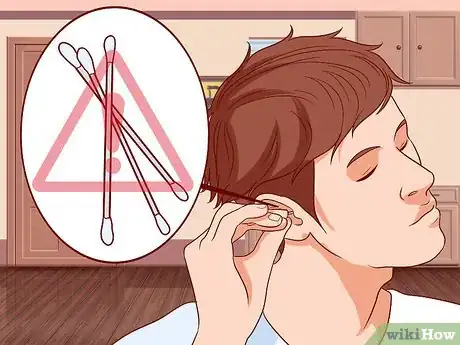

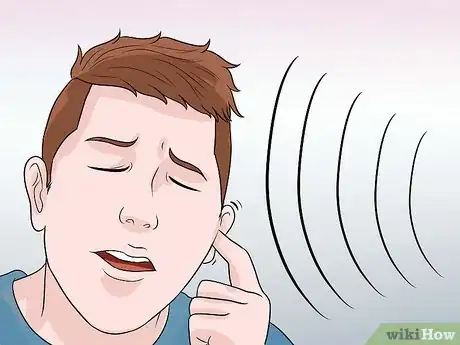

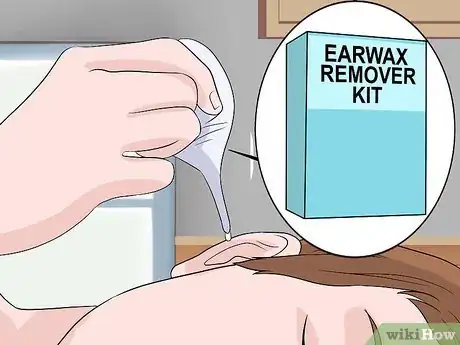
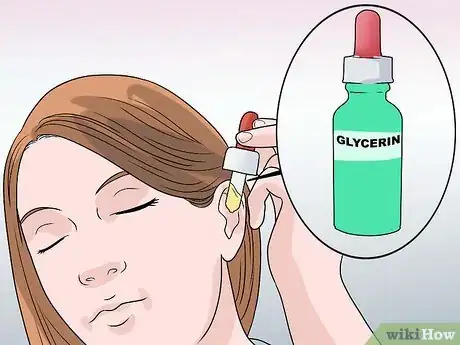

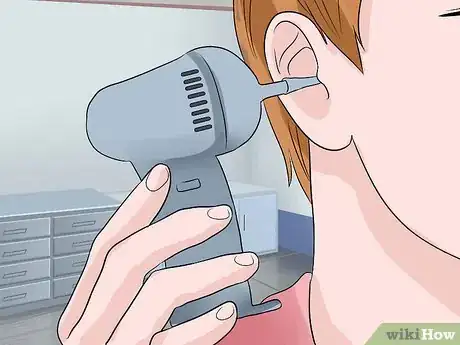
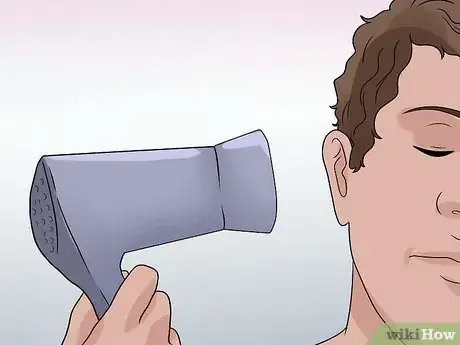
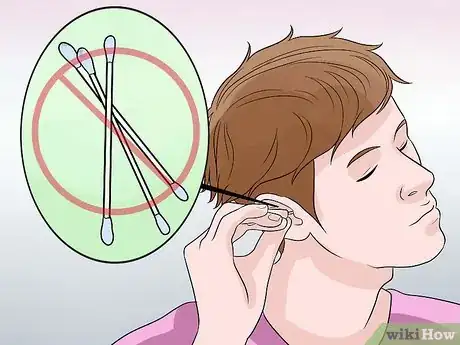
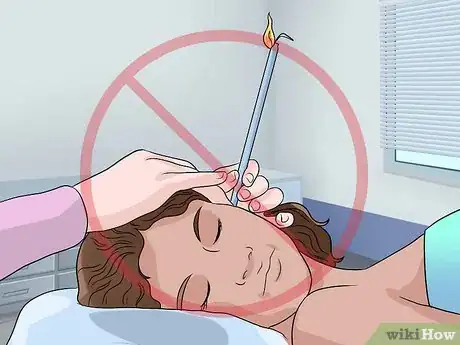
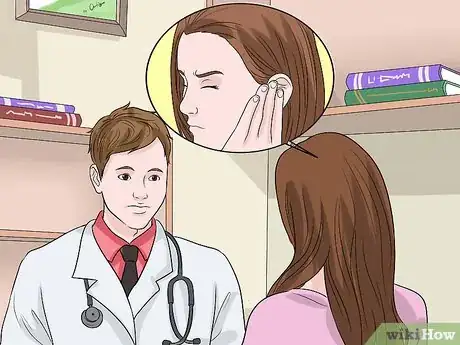

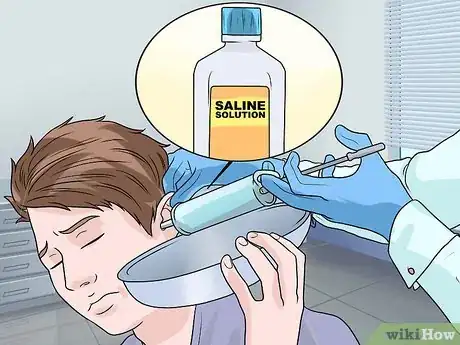


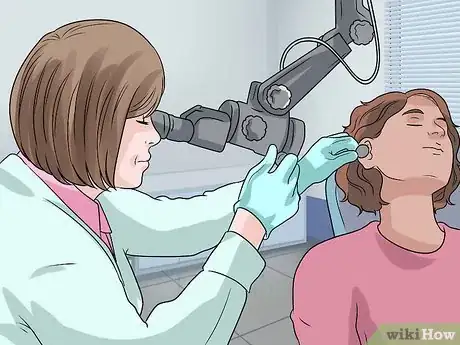




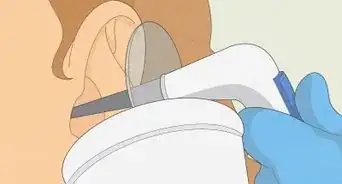
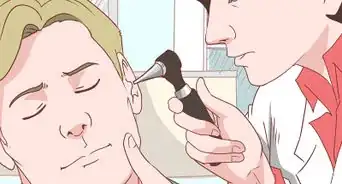


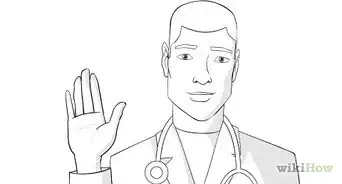
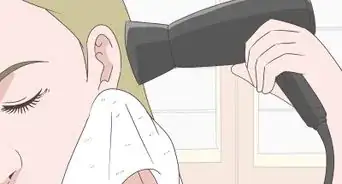


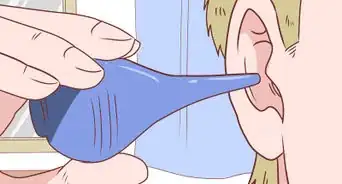











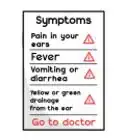






































Medical Disclaimer
The content of this article is not intended to be a substitute for professional medical advice, examination, diagnosis, or treatment. You should always contact your doctor or other qualified healthcare professional before starting, changing, or stopping any kind of health treatment.
Read More...